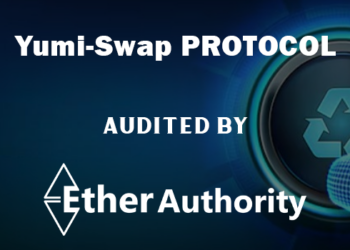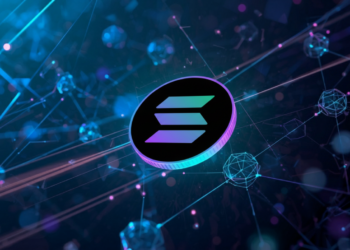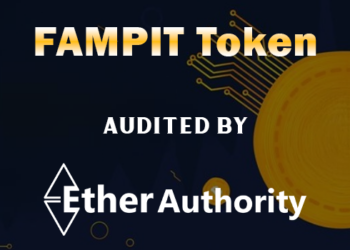Bitcoin, the first decentralized cryptocurrency, has made an undeniable mark on the world of digital finance. Since its creation in 2008 by the pseudonymous Satoshi Nakamoto, Bitcoin has sparked a revolution in how we perceive and use money. At the heart of Bitcoin’s success lies its blockchain technology – a distributed ledger that ensures the security, transparency, and immutability of transactions. If you’re interested in tracking Bitcoin transactions, verifying addresses, or understanding the broader ecosystem, using a Bitcoin blockchain explorer is an essential skill.
In this comprehensive guide, we will walk you through everything you need to know about Bitcoin blockchain explorers, how they work, and how to use them effectively.
What is a Bitcoin Blockchain Explorer?
A Bitcoin blockchain explorer is a tool that allows users to interact with the Bitcoin blockchain. It provides a user-friendly interface to view various details about the Bitcoin network, such as transaction history, block details, wallet balances, and other relevant information.
Blockchain explorers are like search engines for the blockchain. By entering a Bitcoin address, transaction ID (TXID), or block number, users can access detailed information about the associated transactions, including:
- Transaction status (confirmed or unconfirmed)
- The time a transaction occurred
- The sender and receiver addresses
- The transaction amount and fees
- Block height and block reward information
These explorers are essential for anyone involved with Bitcoin, whether you’re an investor, developer, or enthusiast.
How Does a Bitcoin Blockchain Explorer Work?
Blockchain explorers interact directly with the Bitcoin blockchain, which is a decentralized ledger that records every transaction made on the network. The blockchain is publicly available and can be accessed by anyone, but reading it requires specialized tools, which is where the explorer comes in.
Here’s how a Bitcoin blockchain explorer works in a nutshell:
- Connecting to the Network: Blockchain explorers connect to the Bitcoin network using full nodes. These nodes store and maintain copies of the entire blockchain, ensuring that the explorer can pull up-to-date information in real-time.
- Accessing Transaction Data: Each time a Bitcoin transaction occurs, it’s added to a block. These blocks are then linked to each other in a chain – hence the term “blockchain.” The explorer allows you to search for specific transactions, blocks, or wallet addresses and retrieve all the details stored on the blockchain.
- Indexing and Displaying Information: Blockchain explorers index all data from the blockchain and display it in a structured manner, making it easy for users to search for transactions or addresses. This data is then presented through the explorer’s interface.
How to Use a Bitcoin Blockchain Explorer
Using a Bitcoin blockchain explorer might sound complicated at first, but it’s actually quite simple once you understand the basic tools. Here’s a step-by-step guide on how to use a Bitcoin blockchain explorer effectively.
Step 1: Choose the Right Bitcoin Blockchain Explorer
There are several Bitcoin blockchain explorers available, each with its own set of features and functionalities. Some of the most popular Bitcoin blockchain explorers include:
- Blockchair – A powerful explorer that lets you search for blocks, transactions, and addresses across multiple blockchains.
- Blockchain.com – One of the oldest and most widely used explorers that provides detailed Bitcoin block and transaction information.
- BTCscan – A lightweight Bitcoin explorer that focuses on fast and simple searches.
- Blockcypher – A flexible explorer that offers advanced features like transaction notifications and API access.
- SoChain – A great explorer for basic Bitcoin blockchain searches and monitoring.
Choose an explorer that fits your needs. For beginners, Blockchain.com is a great place to start due to its intuitive interface and comprehensive details.
Step 2: Search for a Transaction or Address
Once you’ve chosen your Bitcoin blockchain explorer, you can start searching for information. There are several ways to search for data:
- Search by Transaction ID (TXID):
Every Bitcoin transaction is assigned a unique transaction ID, which is a string of letters and numbers. If you know the TXID of a particular transaction, simply enter it into the search bar of your chosen explorer to view details about that transaction. - Search by Bitcoin Address:
If you want to see the transaction history of a specific Bitcoin address, enter the address into the explorer’s search bar. You’ll be able to see all incoming and outgoing transactions associated with that address. - Search by Block Number:
Every block in the Bitcoin blockchain has a unique number, known as the block height. By searching for a specific block number, you can view details about the block, such as the timestamp, number of transactions, and the miner who mined the block.
Step 3: Explore Transaction Details
After performing a search, you’ll be presented with detailed information about the transaction. Here’s what you can expect to find:
- Transaction Confirmation:
Blockchain explorers show you whether a transaction is confirmed or unconfirmed. A transaction becomes confirmed once it’s included in a block. Unconfirmed transactions are still in the mempool (a waiting area for unprocessed transactions). - Transaction Amount:
You’ll be able to see the amount of Bitcoin that was transferred in the transaction. Bitcoin is divisible up to eight decimal places, so the amount will be displayed in BTC or satoshis (the smallest unit of Bitcoin). - Sender and Receiver:
The explorer will show the Bitcoin addresses of both the sender and the receiver. This is useful if you want to trace where a particular Bitcoin is coming from or where it’s going. - Transaction Fees:
Bitcoin transactions typically involve a transaction fee, which incentivizes miners to include the transaction in the blockchain. The fee is displayed along with the transaction. - Block Information:
Each transaction is included in a block. The explorer will display the block number, its timestamp, and the hash associated with it.
Step 4: Track Bitcoin Transactions in Real-Time
One of the key features of Bitcoin blockchain explorers is the ability to track transactions in real-time. For example, if you’re waiting for a Bitcoin payment, you can input your Bitcoin address or TXID into the explorer and see when the transaction is confirmed and included in a block. Some explorers also provide a live feed of new blocks and transactions.
Step 5: Verify Transaction History
Blockchain explorers are ideal tools for verifying the history of Bitcoin transactions. If you’re ever unsure about the status of a payment or want to ensure that a transaction was completed, simply input the transaction ID into the blockchain explorer to get a clear record of its details.
Why Should You Use a Bitcoin Blockchain Explorer?
Using a Bitcoin blockchain explorer offers several benefits, especially if you’re actively involved in the cryptocurrency space. Here are some reasons why you should use an explorer:
- Transparency:
Blockchain technology is known for its transparency. With a blockchain explorer, you can view all transactions made on the Bitcoin network, which promotes accountability and trust. - Security:
Since Bitcoin is a decentralized system, there’s no central authority to verify transactions. Blockchain explorers provide an additional layer of verification, allowing you to track and confirm transactions independently. - Real-Time Monitoring:
Bitcoin blockchain explorers allow you to monitor your Bitcoin transactions and address balances in real time. This feature is invaluable for traders and investors who want to track price movements and manage their portfolio. - Audit and Investigate:
Blockchain explorers are also useful for auditing purposes. If you’re investigating suspicious activity or want to ensure the legitimacy of a Bitcoin transaction, an explorer can provide clear, verifiable data.
Conclusion
A Bitcoin blockchain explorer is an invaluable tool for anyone who uses or interacts with Bitcoin. Whether you’re an investor tracking transactions, a developer debugging issues, or someone simply curious about Bitcoin’s operations, these explorers provide the necessary tools to explore the Bitcoin network in-depth. By understanding how to use a Bitcoin blockchain explorer effectively, you gain transparency, security, and control over your Bitcoin transactions.
As Bitcoin and blockchain technology continue to evolve, using a blockchain explorer will become increasingly important for staying informed and making well-educated decisions in the cryptocurrency space. So, take the time to familiarize yourself with these tools – they are essential for navigating the world of Bitcoin!
Join Us : Twitter | Website | GitHub | Telegram | Facebook | YouTube























